OddCameras.com
Sarabčr Finetta 99 (Ditto 99)
The
Finetta 99 is a 35mm film camera made by the Finetta-Werk in Goslar,
Germany. The company had been founded by Piet (later: Peter) Sarabčr, a
Dutch engineer, just after the Second World War. The first cameras were
the simple Finette 35mm viewfinder cameras, followed by the Finetta
series. Some of these cameras already had interchangeable lenses, first
in 27mm screw mount, then in a bayonnet mount.
The ultimate Finetta camera was launched in 1953, the Finetta 99. It
features a new bayonet quick mount, a focal-plane shutter and a spring
motor for film advance, which also cocks the shutter. The shutter has
speeds from 1/25 to 1/1000 second, plus B. There was also a Finetta
99L, with slow speeds down to 1s on a separate speed dial. The camera
is synchronised for flash, with both, a hot shoe and a PC socket. The
hot shoe was a unique feature in those days.
The camera was presented at the Photokina in April 1954 and was quite
an attraction, as its price was about a third of the price of its
competitors with interchangeable lenses, like Contax and Leica. The
camera was launched as Ditto 99 in the USA the same year. The new body
design and mount was also used for the simpler Finetta 88, which
replaced the older Finettas.
The camera lacks a rangefinder, parallax correction and a light meter which is astonishing for a high class camera. The lenses
are mostly named Finetar. There were a 35 mm f/4.3, a 45 mm f/2.8, a 70
mm f/4.5 and a 105 mm f/6.3. A highlight was the 45 mm f/2.8 Finon macro
lens which focusses down to 21 (!) cm.
The company grew fast and the cameras sold quite well, but in 1956 it went into insolvency. The factory was closed in 1957.
Some photos:
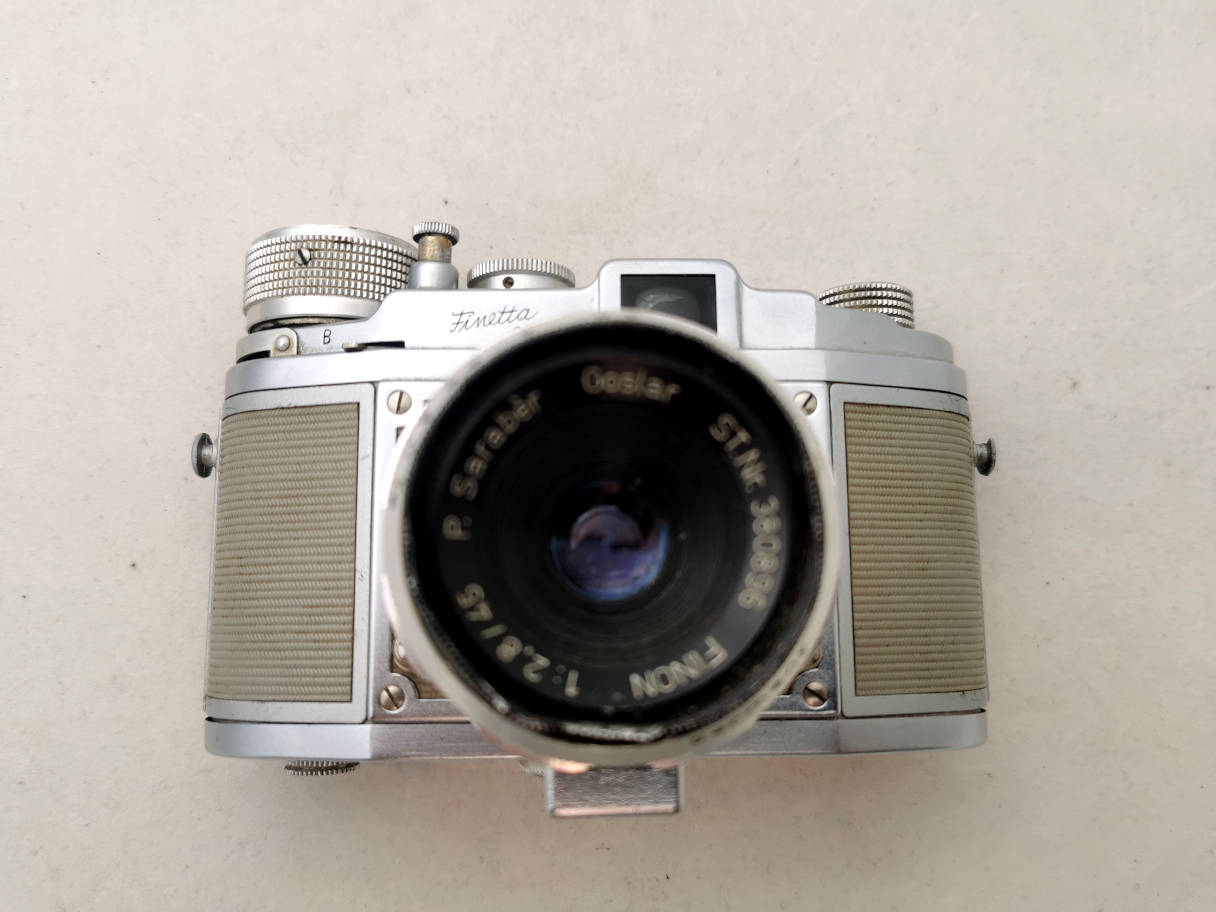
Camera front. Focus on the body. Small viewer.
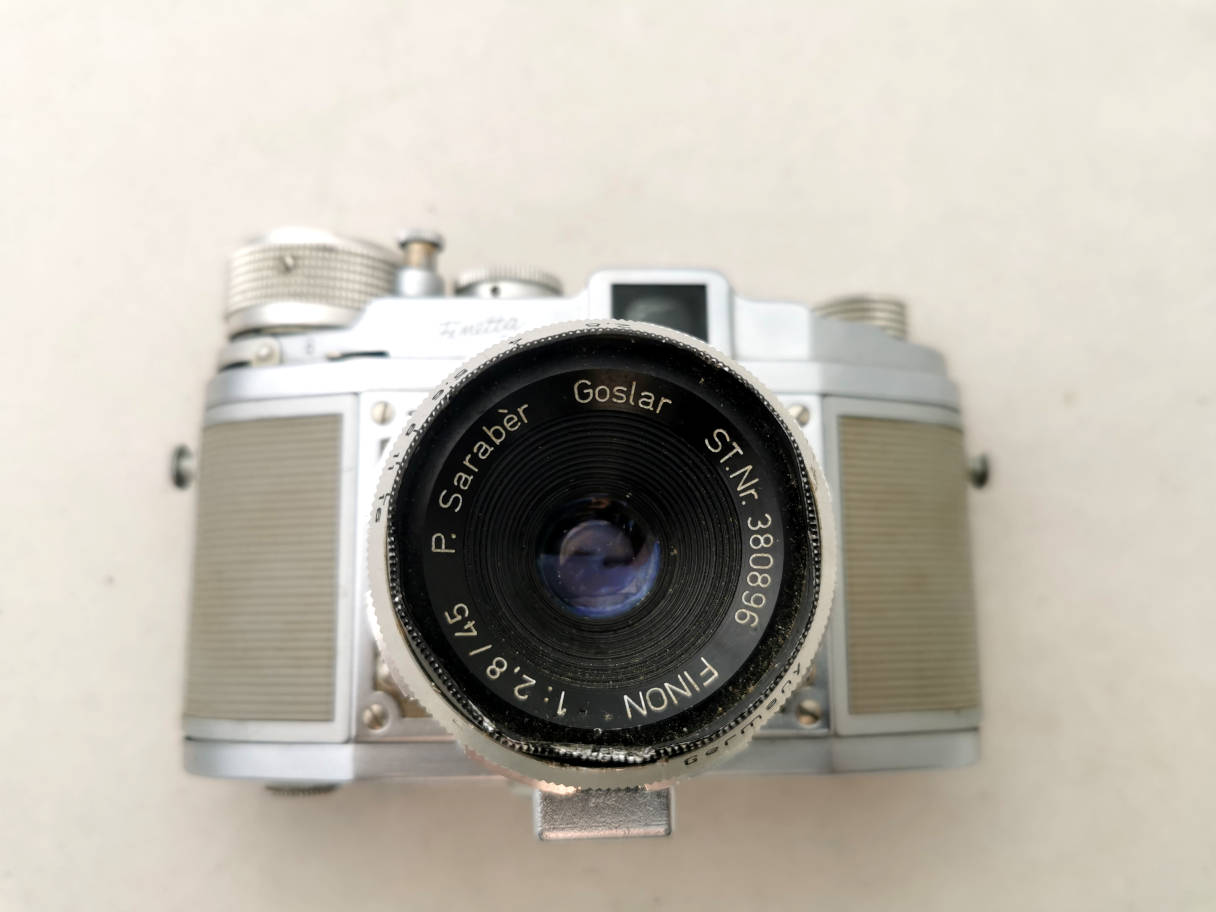
Focus on the lens, an extraordinary F2.8 45mm.macro lens.
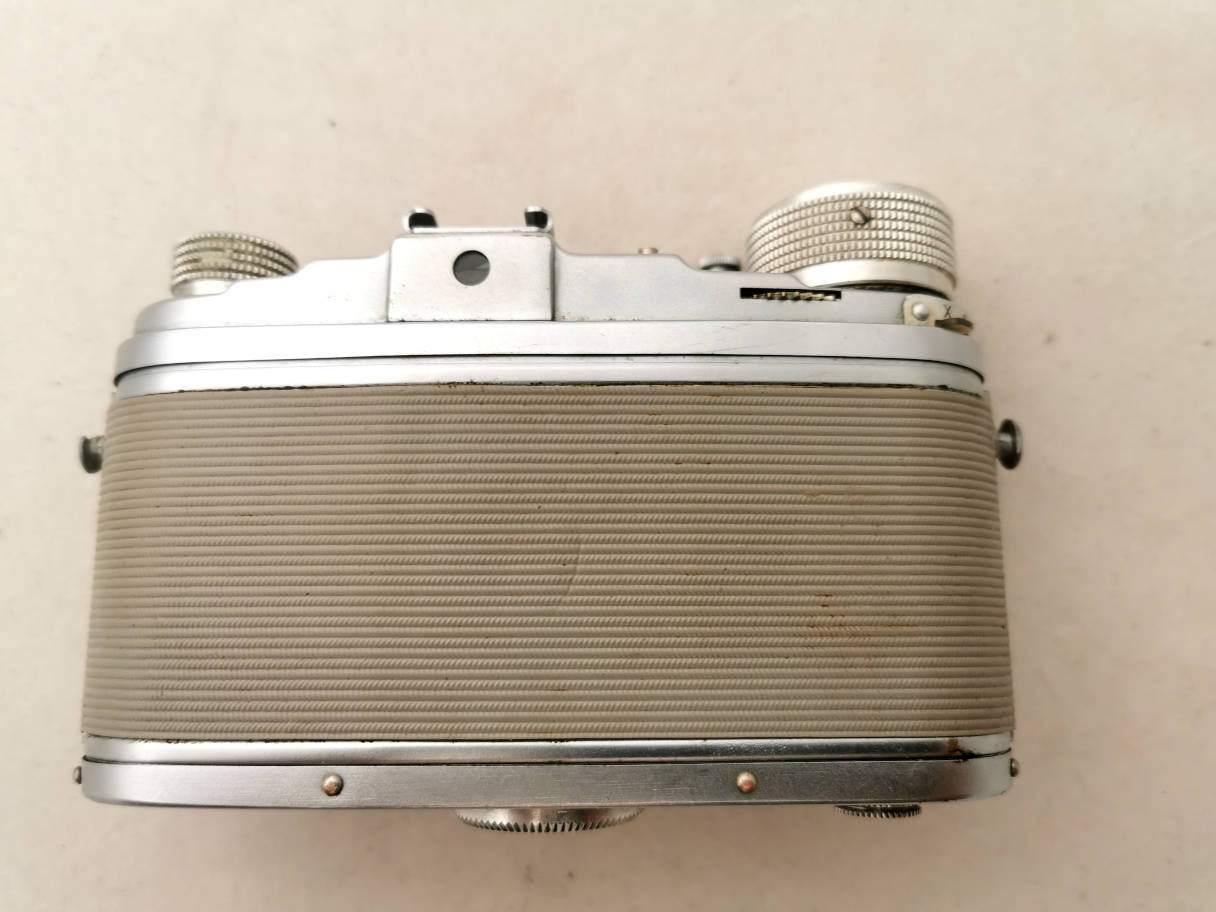
Camera
back. Tiny eyepiece.
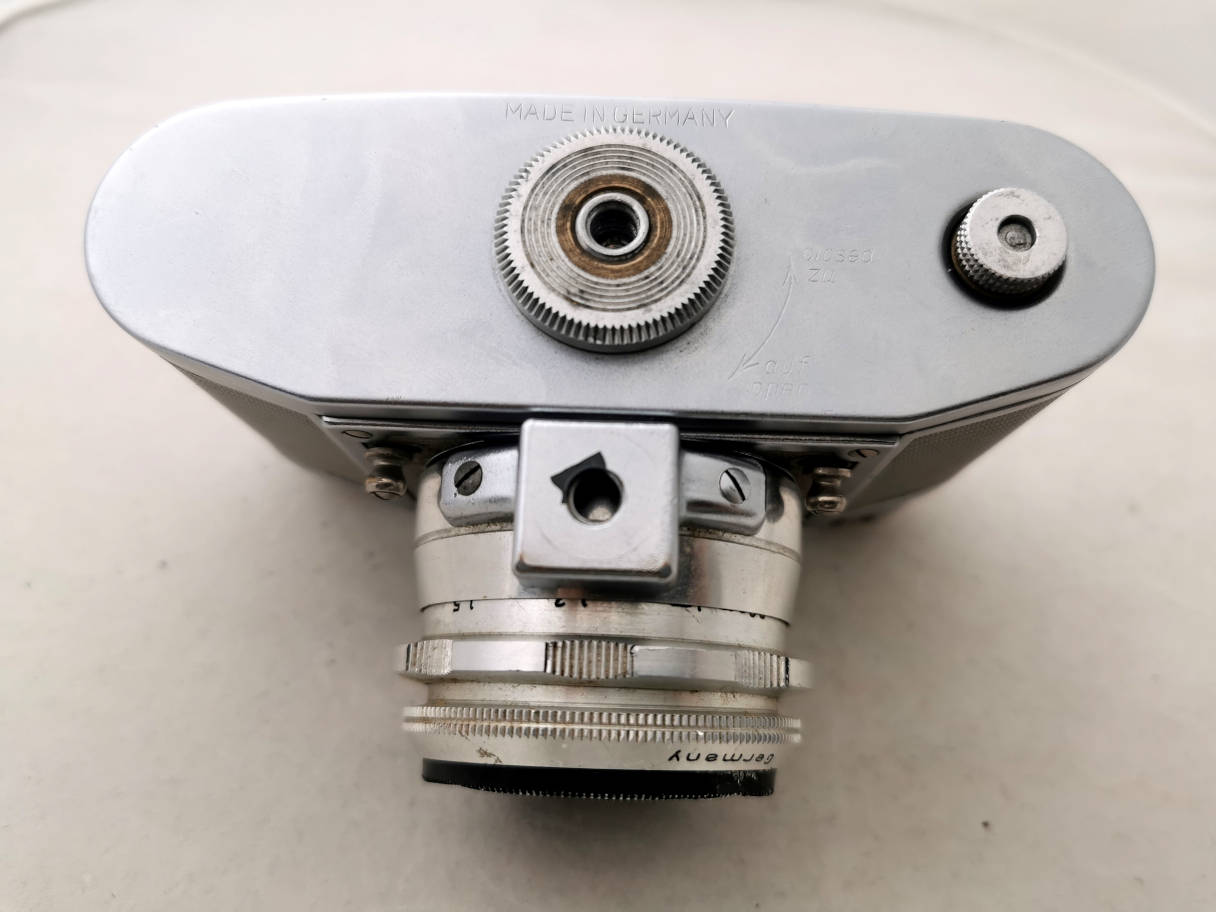
Camera
bottom. Camera back cover release with tripod socket (inscription of the direction to turn is faint), tripod socket on the lens and rewind release.
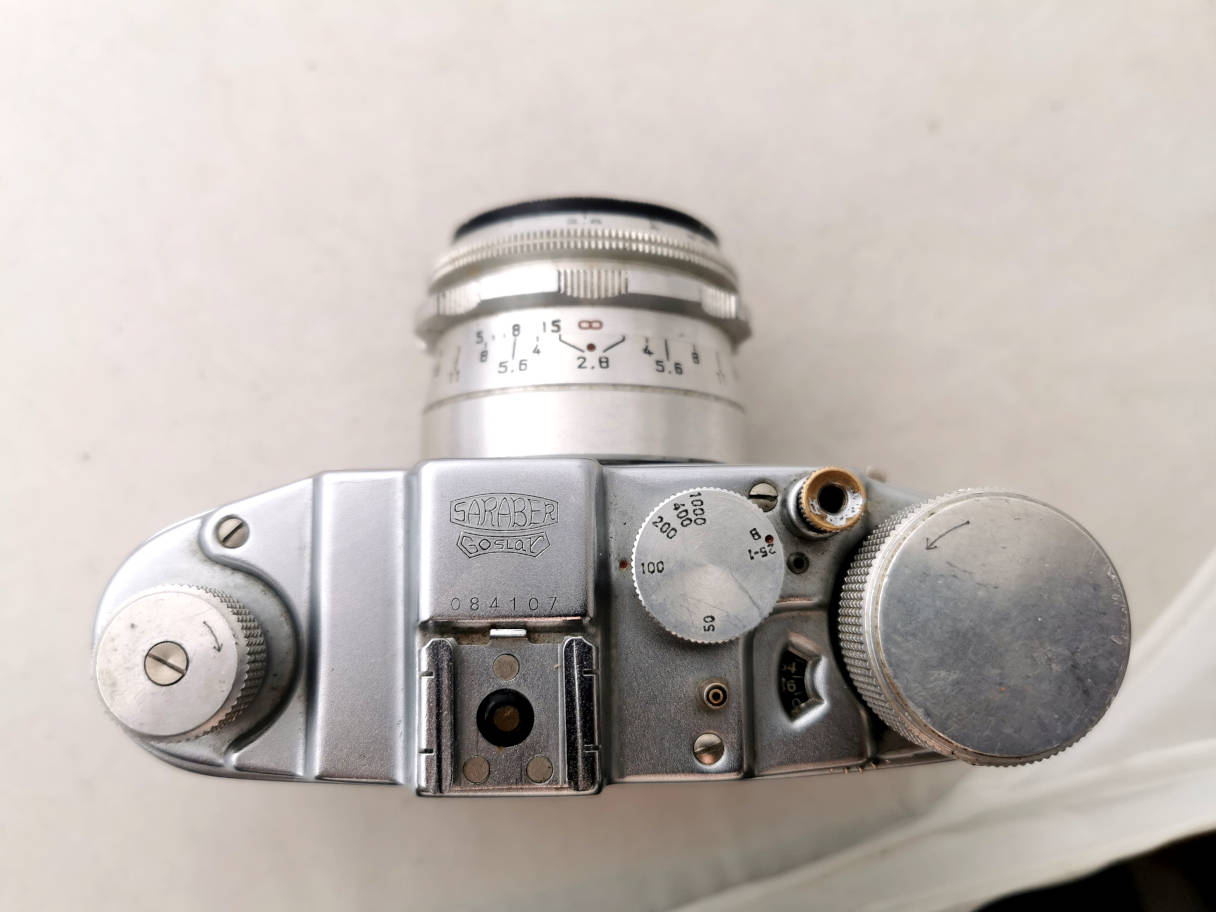
Seen
from above. Rewind knob (further instructions below), hot shoe (one of
the first in camera history), speed dial (lift to adjust), shutter
release with cable socket, film counter and wind.
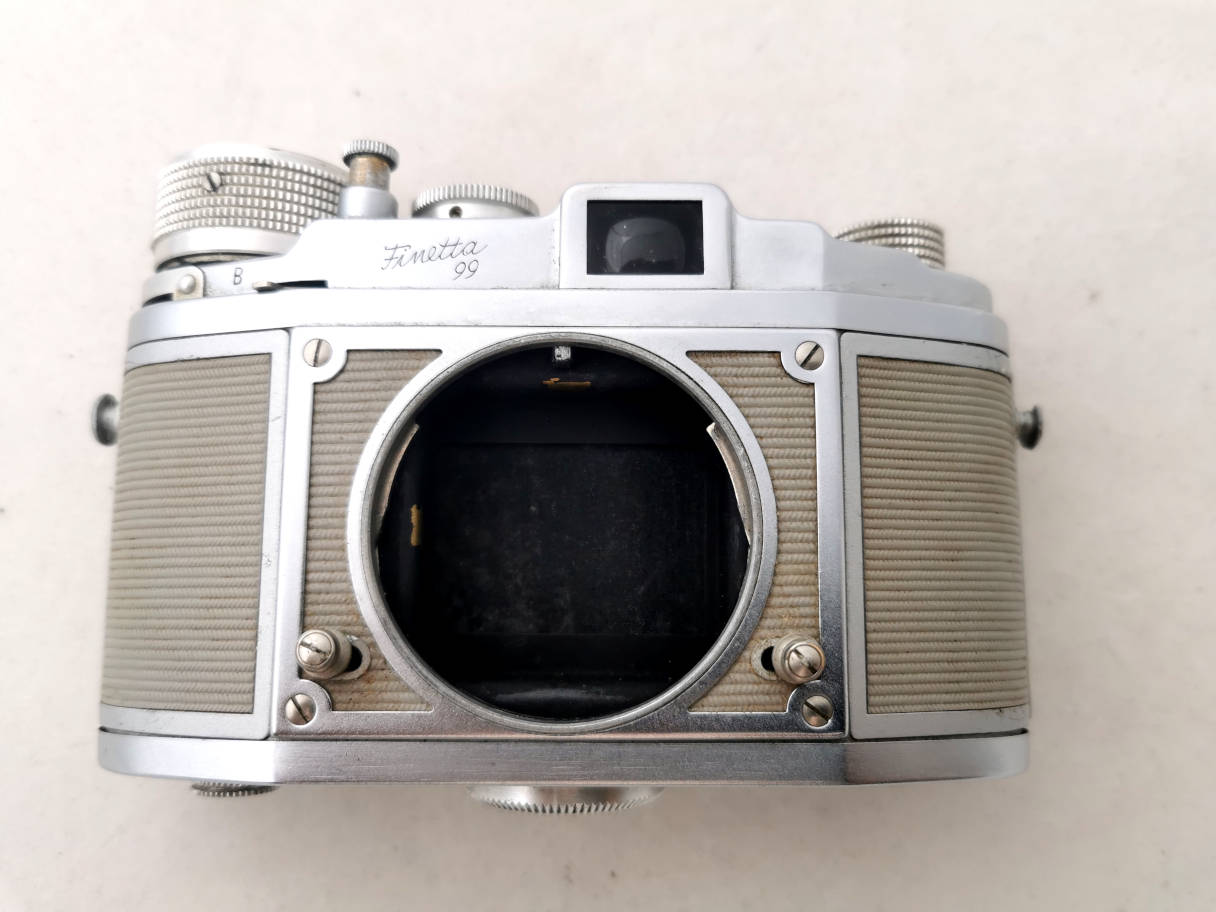
Camera body. The 2 tabs have to be squeezed to release the lens.
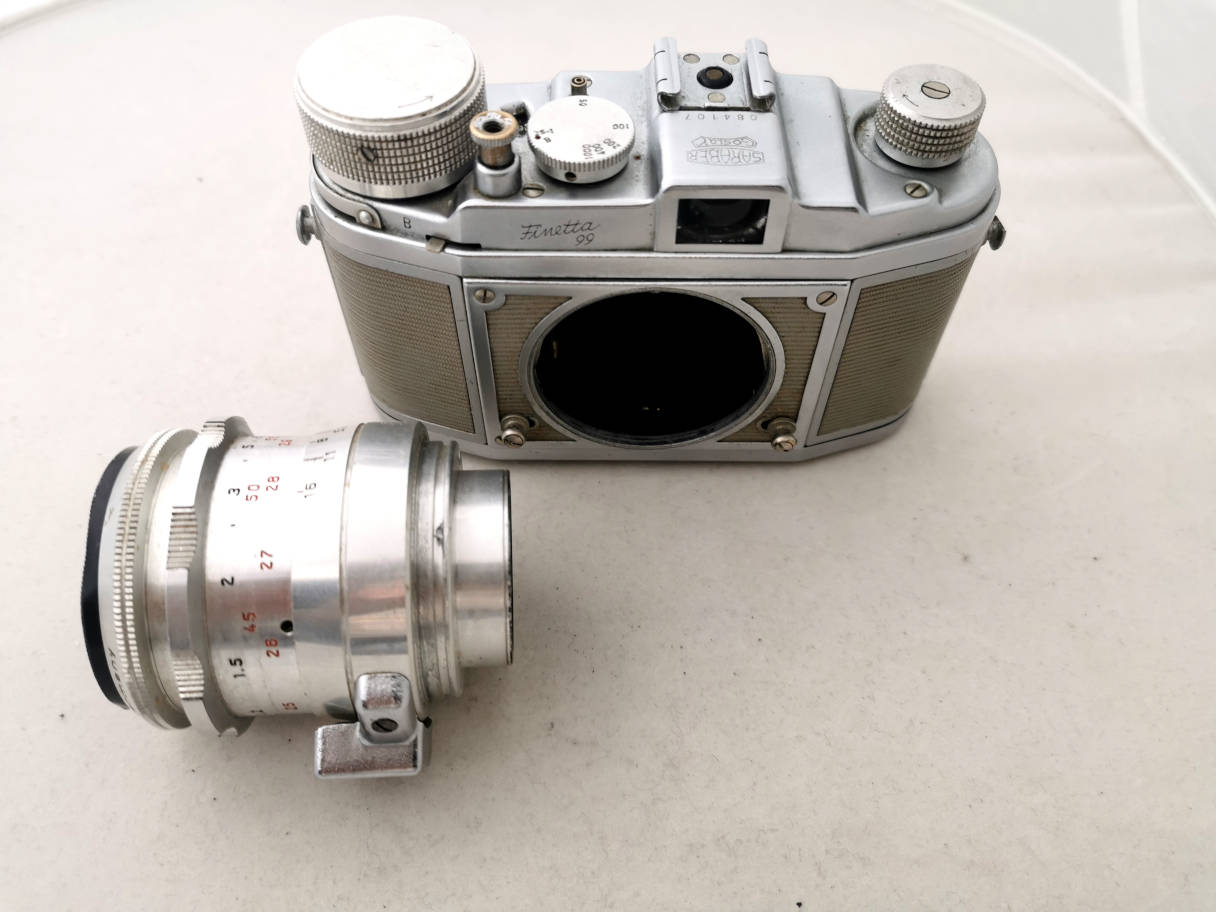
Lens detached, bajonet mount.
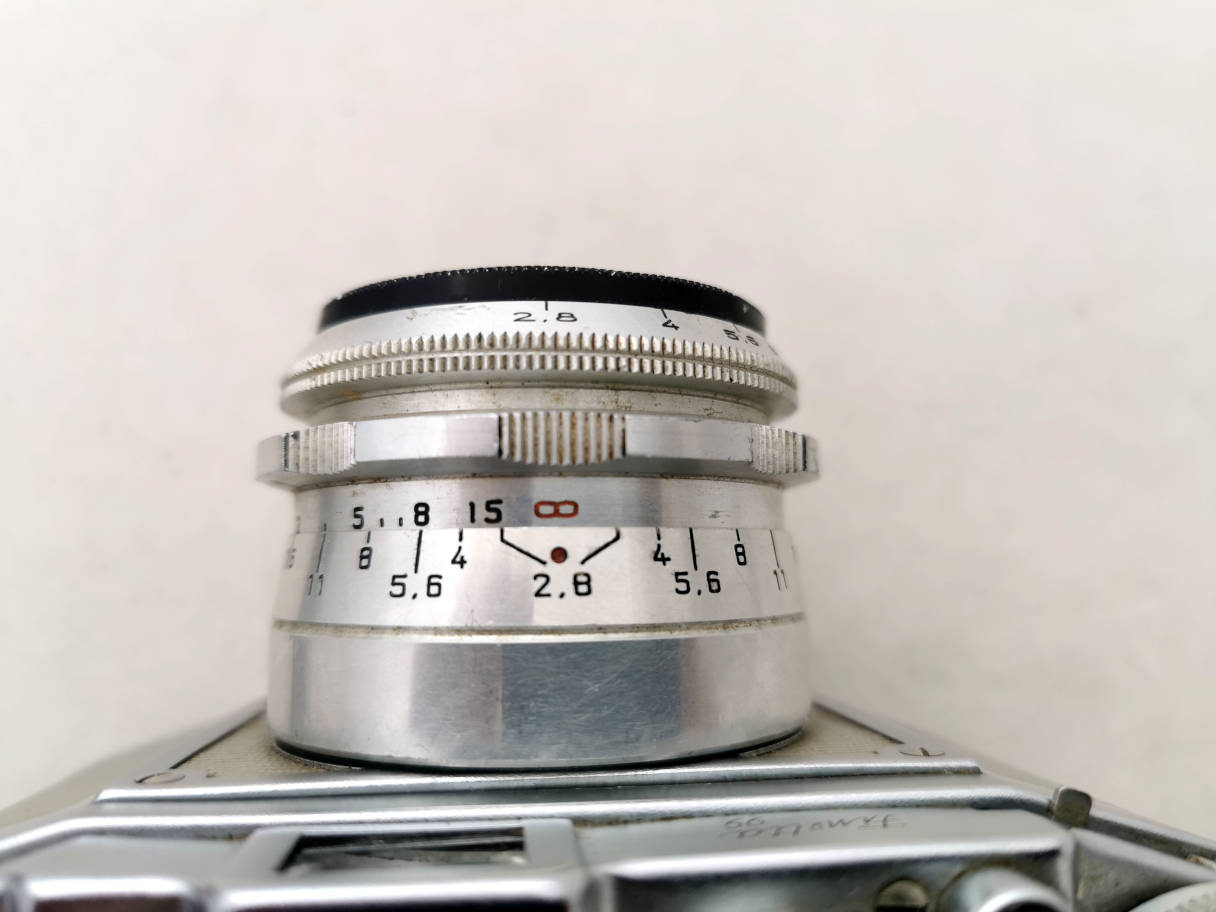
The lens is a macro lens which focusses down to 21 (!) cm. This takes 3 full turns of the lens barrel. Set to infinity
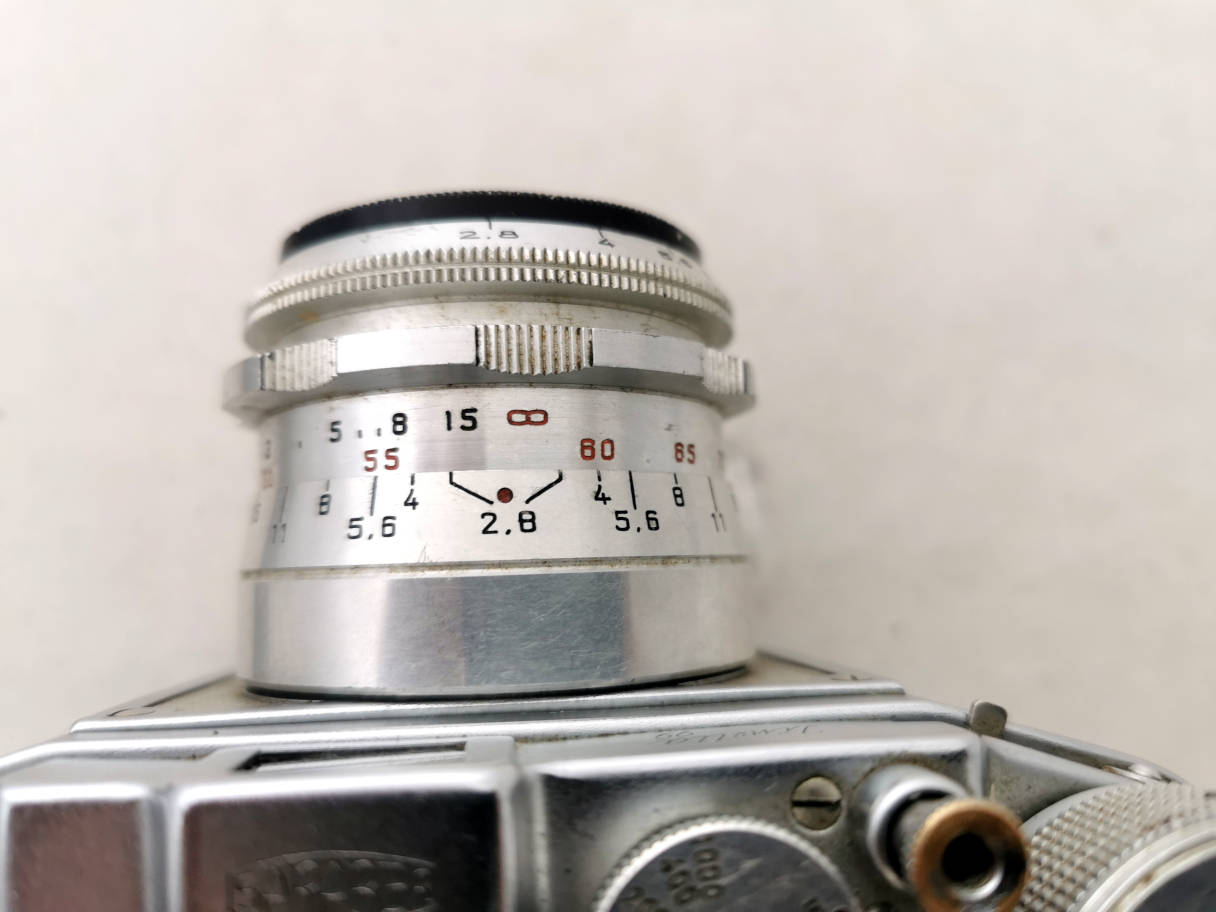
First full turn, between 80 and 55 cm..
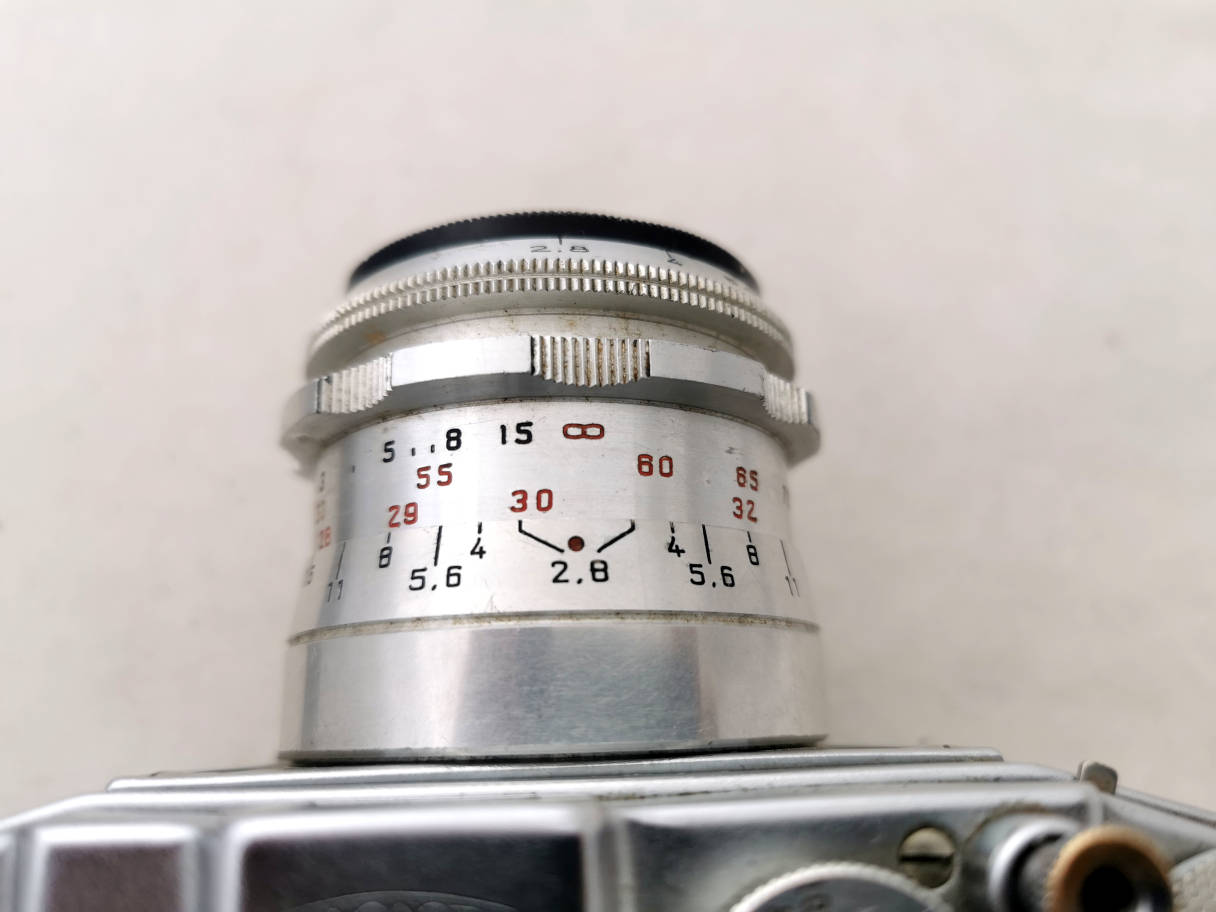
Second full turn, around 30 cm..
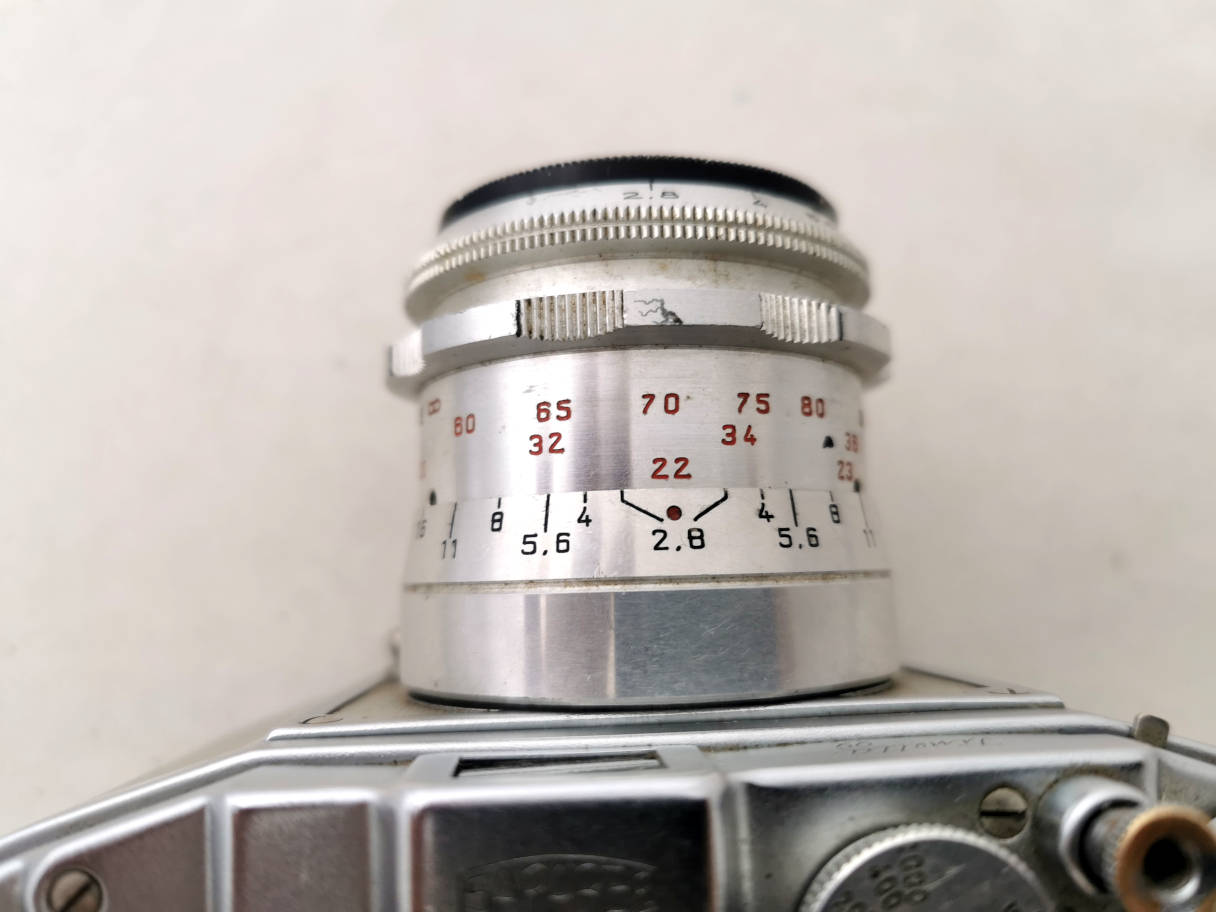
Third turn up to the last number, 22 cm
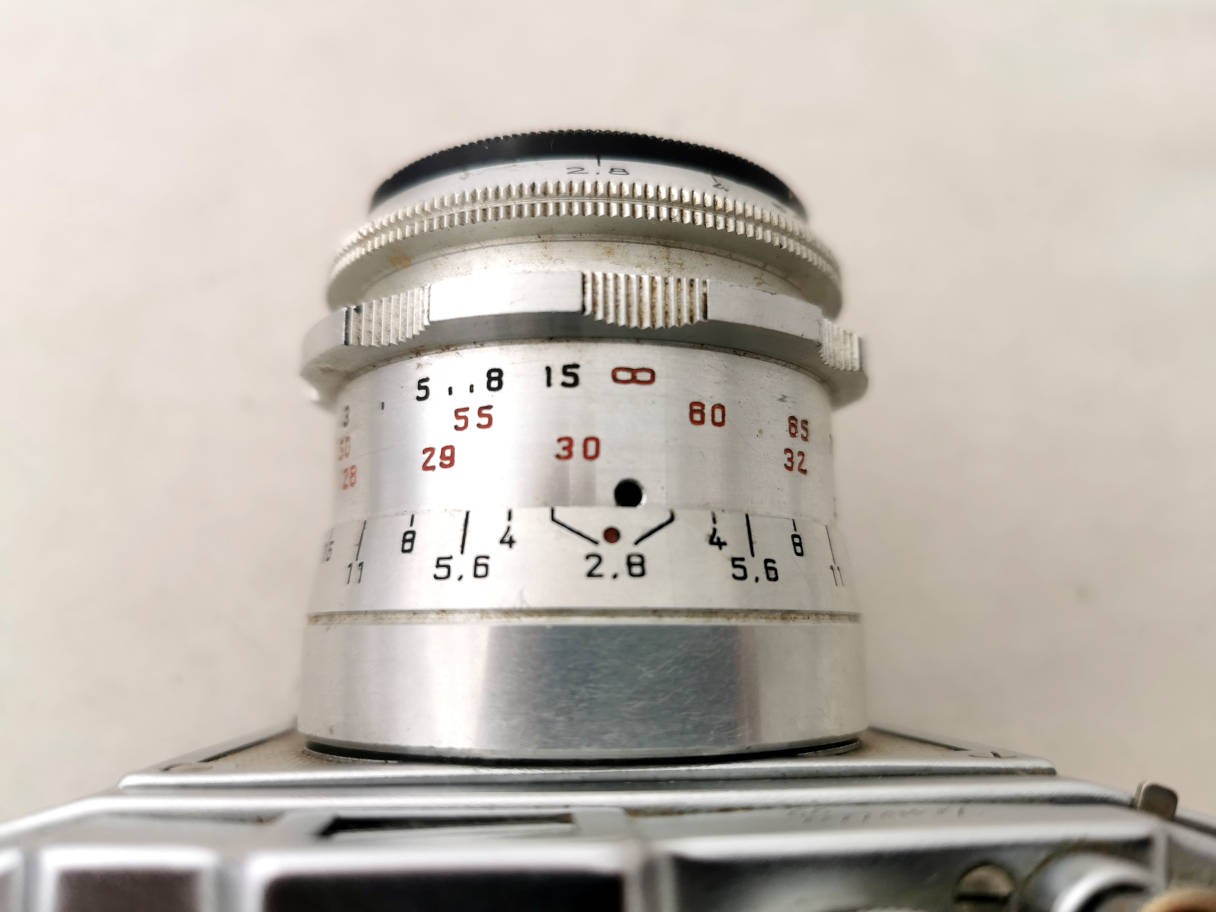
Turned to the end, about 21 cm.
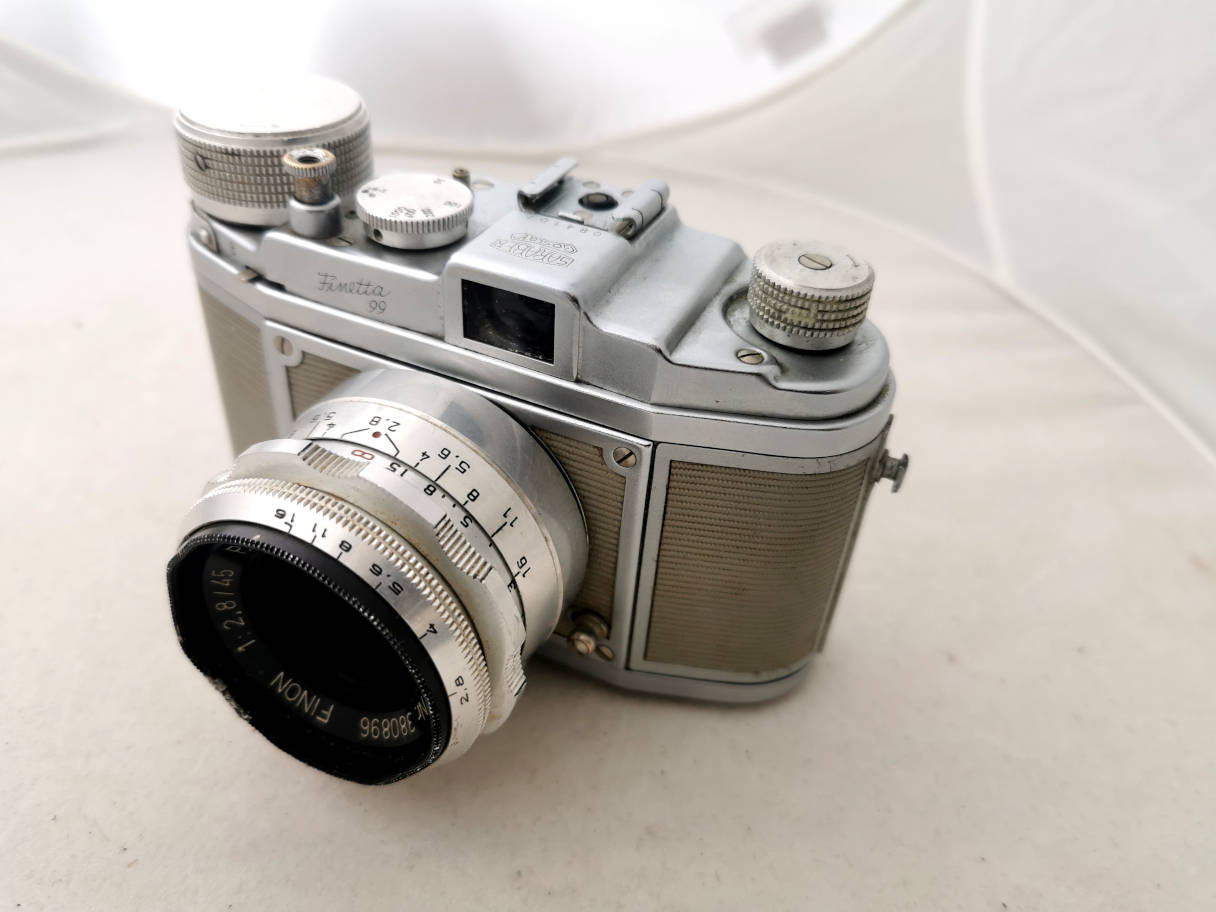
A stylish camera...
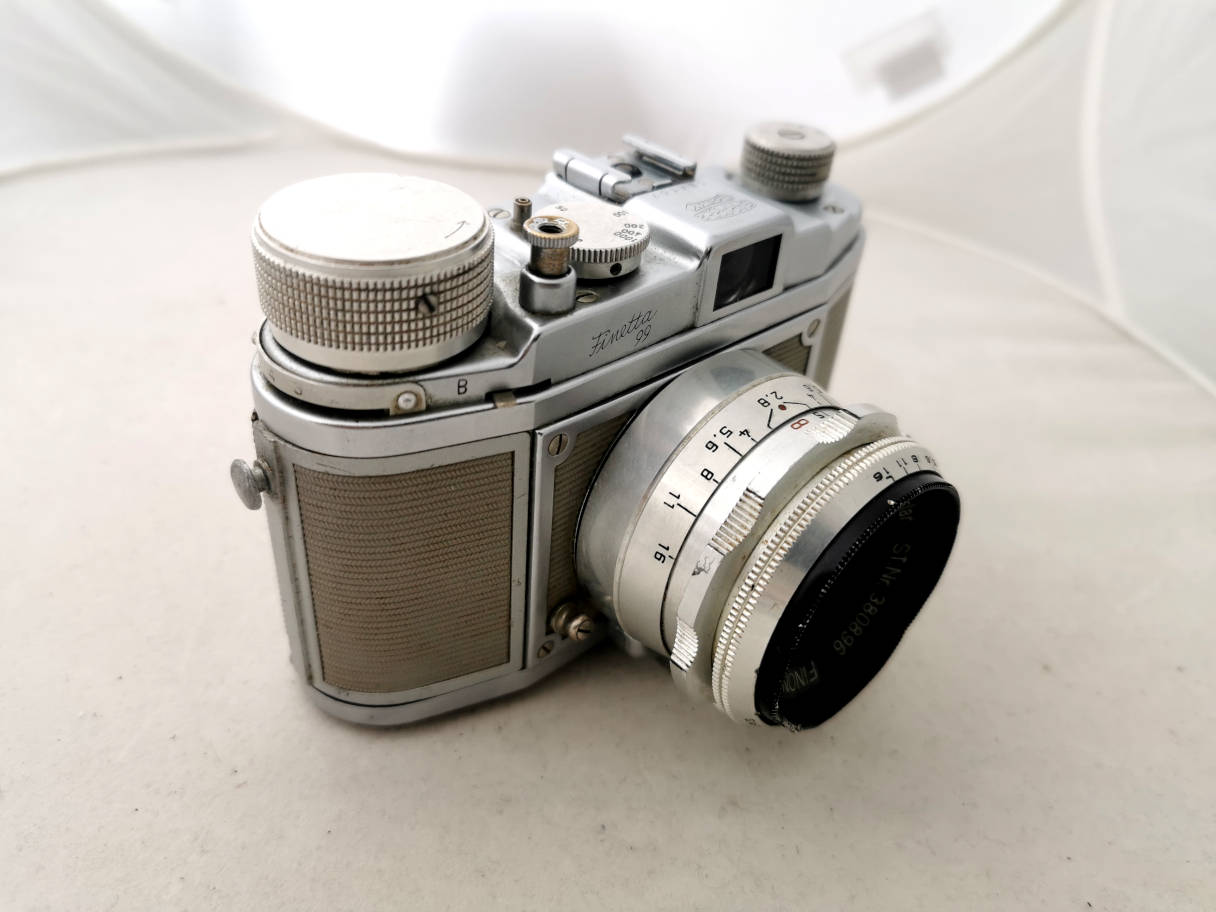
...from the 1950s.
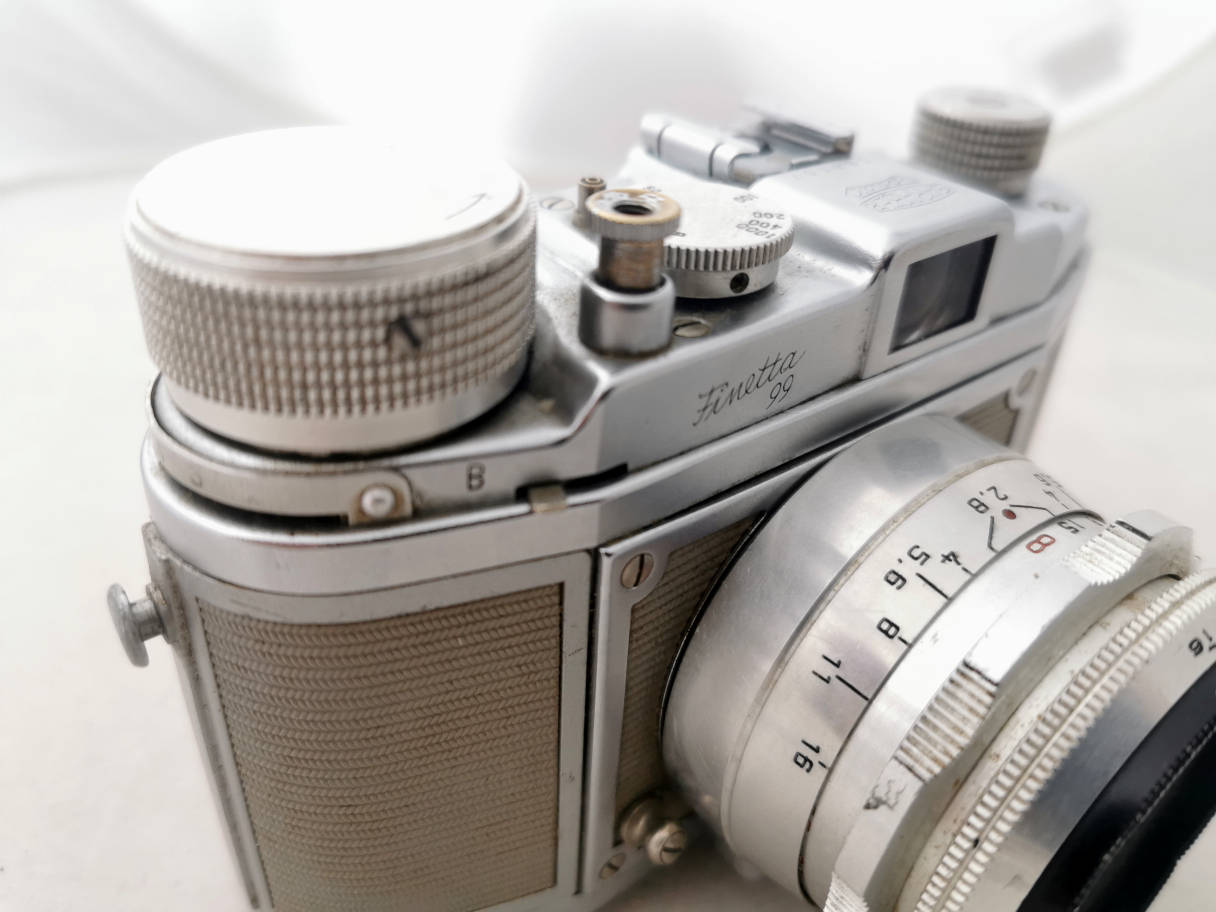
The B setting is a little bit complicated. The shutter has to be cocked
and set to 1/25s/B. Then the little lever has to be moved to B. Release
the shutter and move the lever back. This unblocks the shutter
release. If you want to make another B exposure, set the lever
back to B. So, between each exposure it has to be set back. Do not move
the speed dial or the winder with the lever set to B. This may ruin the
camera!
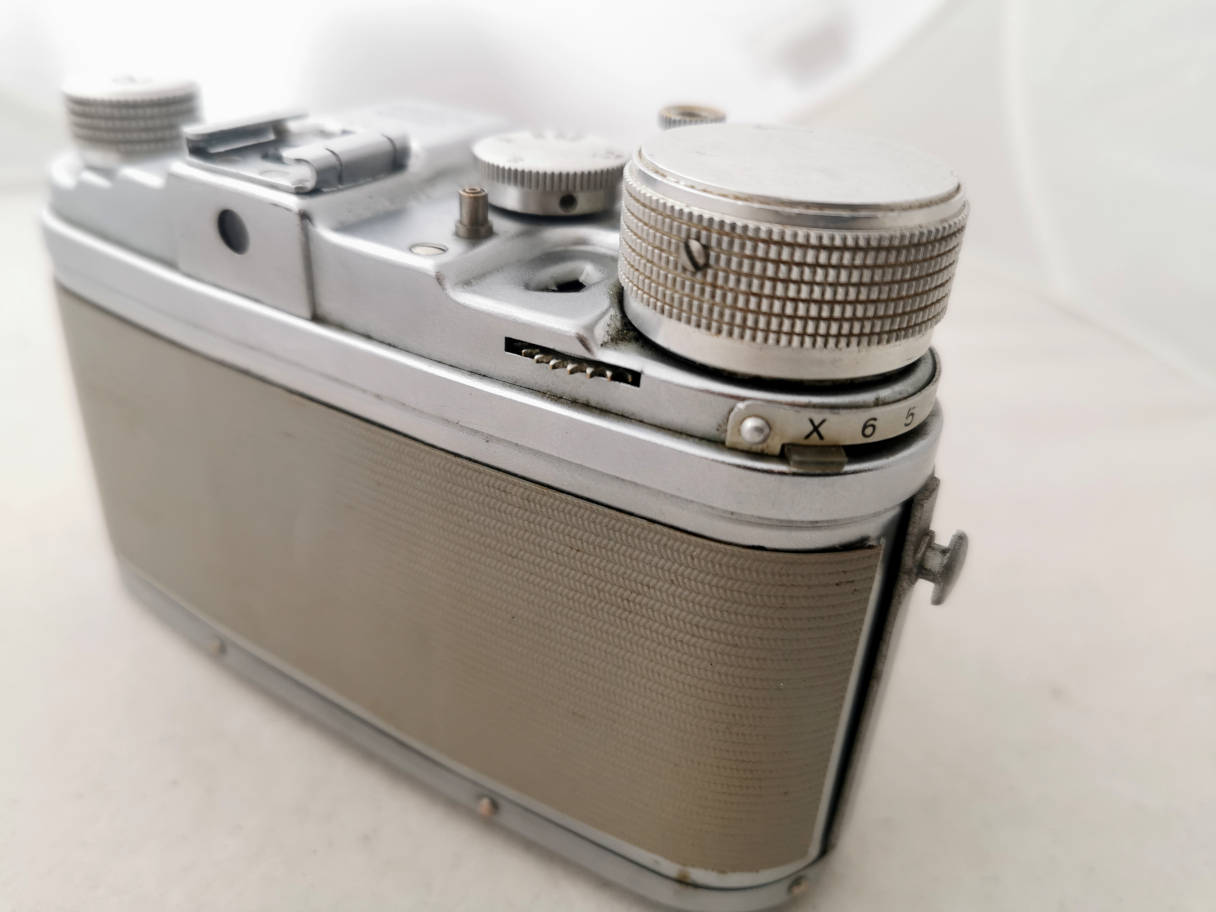
Flash syncro lever set to X for electronic flash. Shutter speed should
be 1/25s (recommended), the manual says that 1/50 is possible. For bulb
flashes the sync time has to be set according to your bulbs in steps
from 1 to 6. Each step is 3.5 ms delay. In the case of longer burning flash
bulbs and appropriate sync times, shorter speeds are possible.
Note the dented wheel near the wind button, it adjusts the film counter.
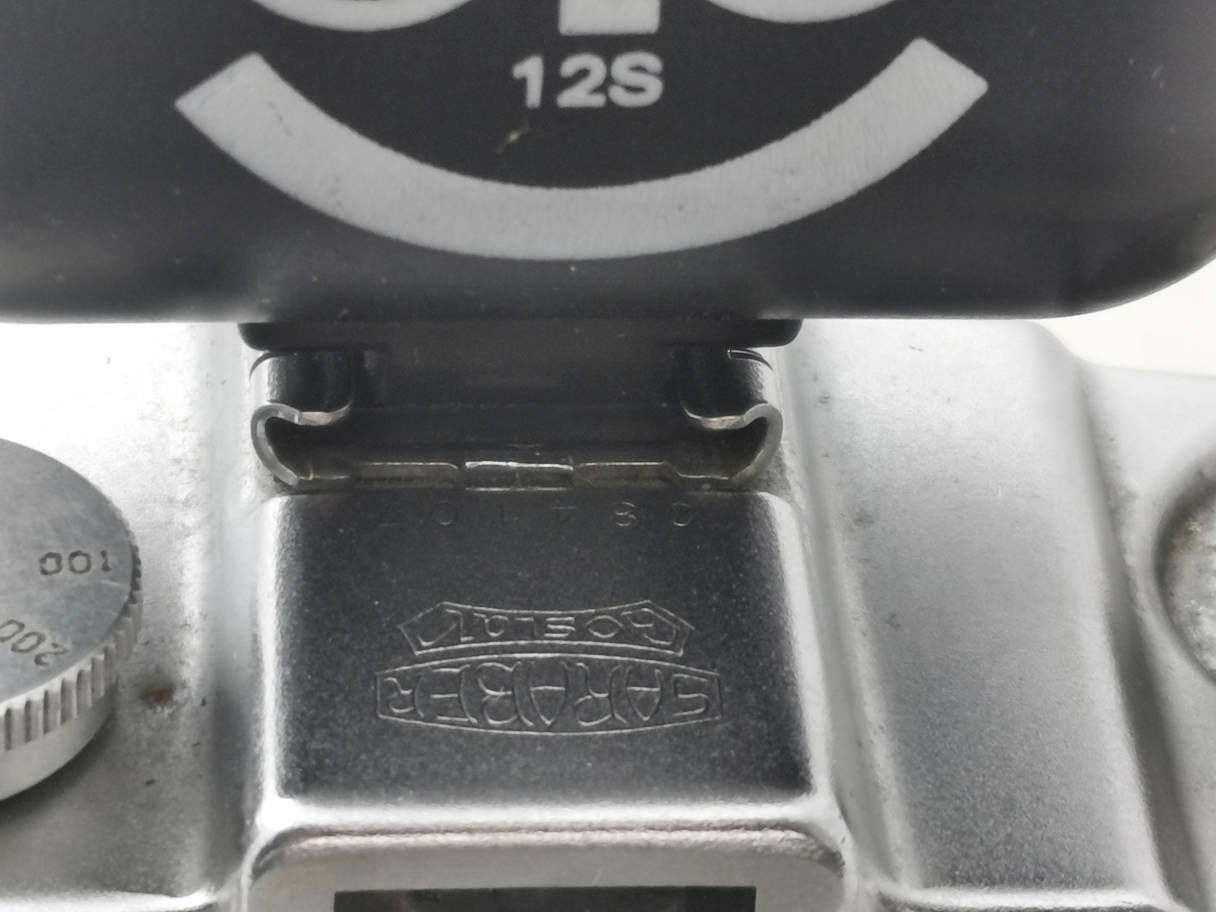
A modern hot shoe flash can use the hot shoe if you push the flash not all the way in, but stop about 2-3 mm before the end.
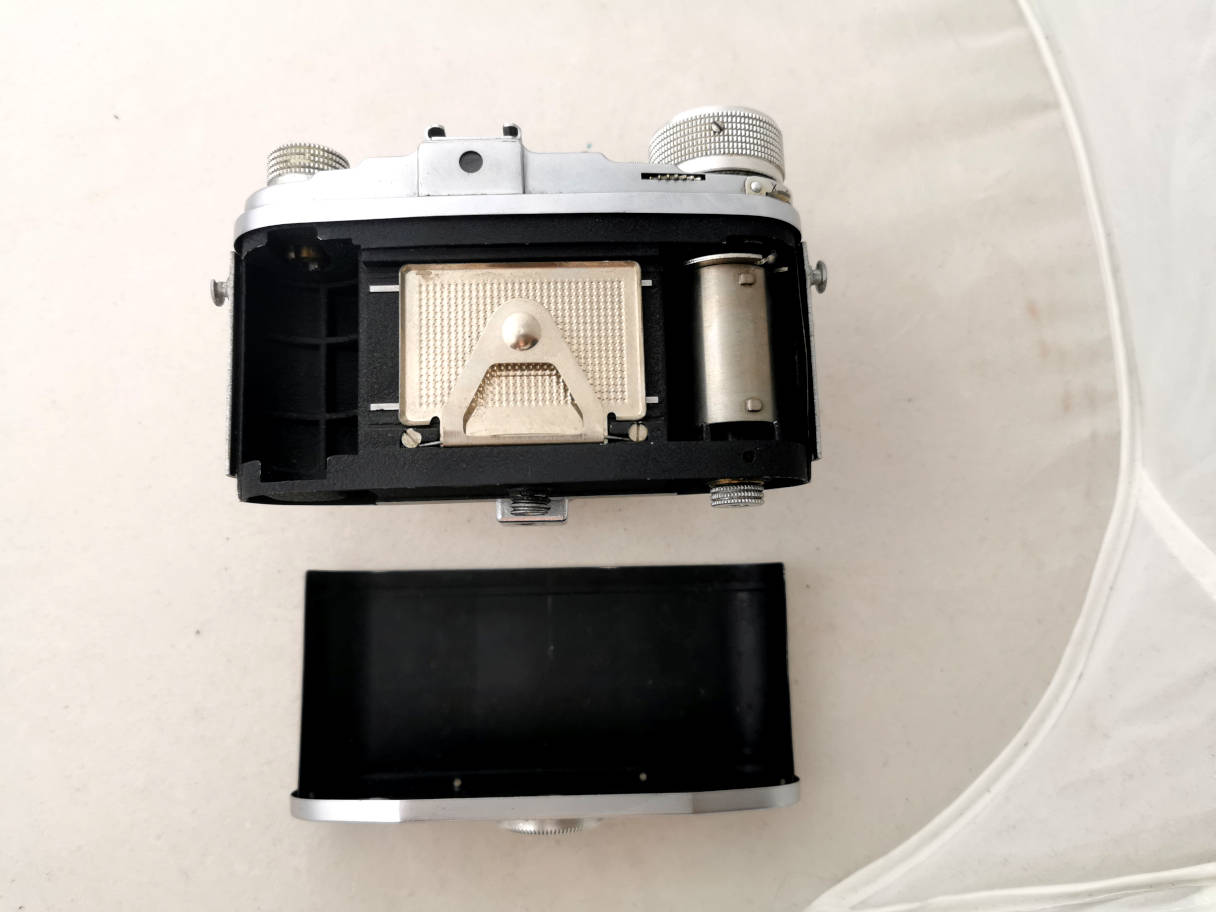
Camera back open. It opens by turning in the direction of the clock.
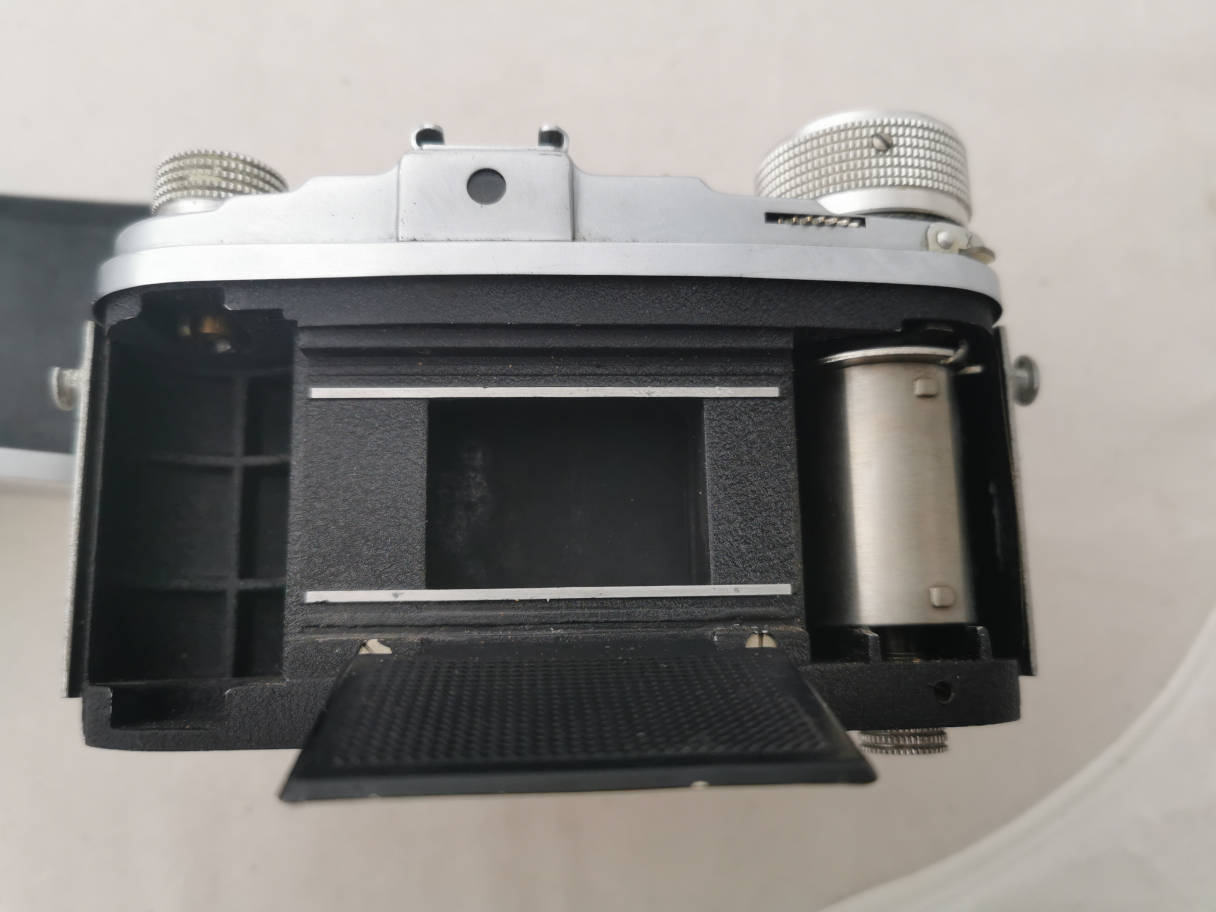
Film
compartment. Note that there are no dented wheels for film transport via the sprockets.
There are 2 hooks on the wind barrel to attach the film.
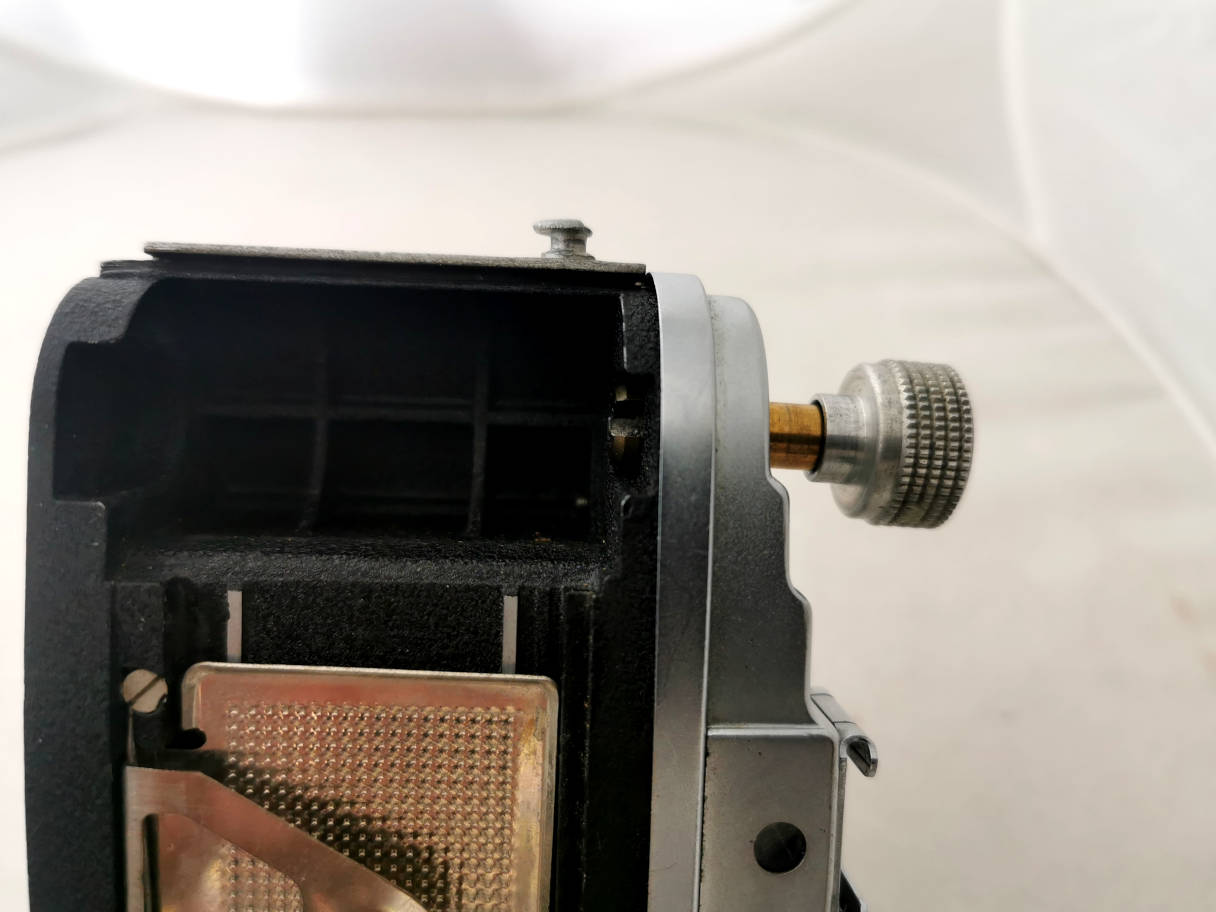
To rewind the film, you have first to unscrew the axis of the rewind button.
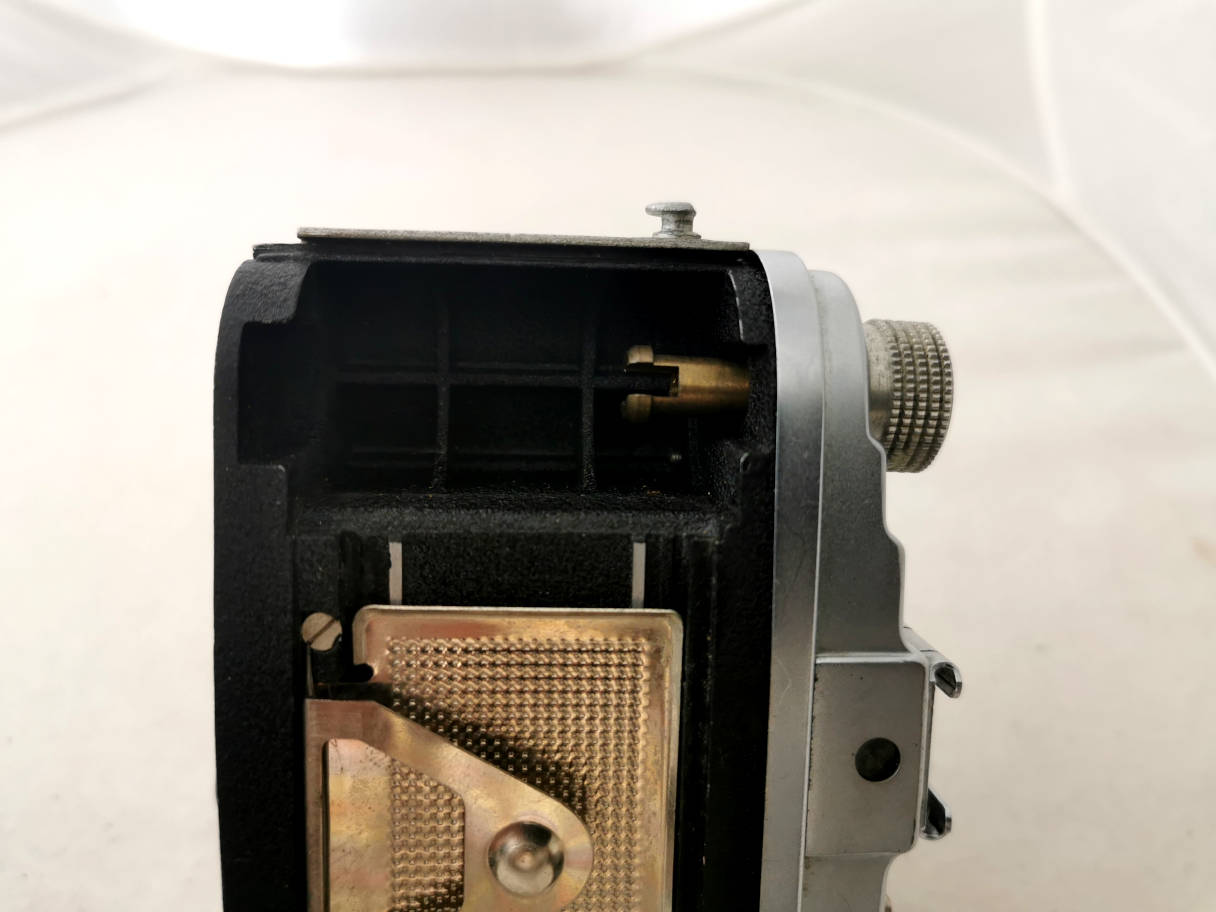
Then push the axis into the film canister. Now unlock the film wind,
it's the smaller button on the bottom, it's several turns until it's
free. Then rewind the film.
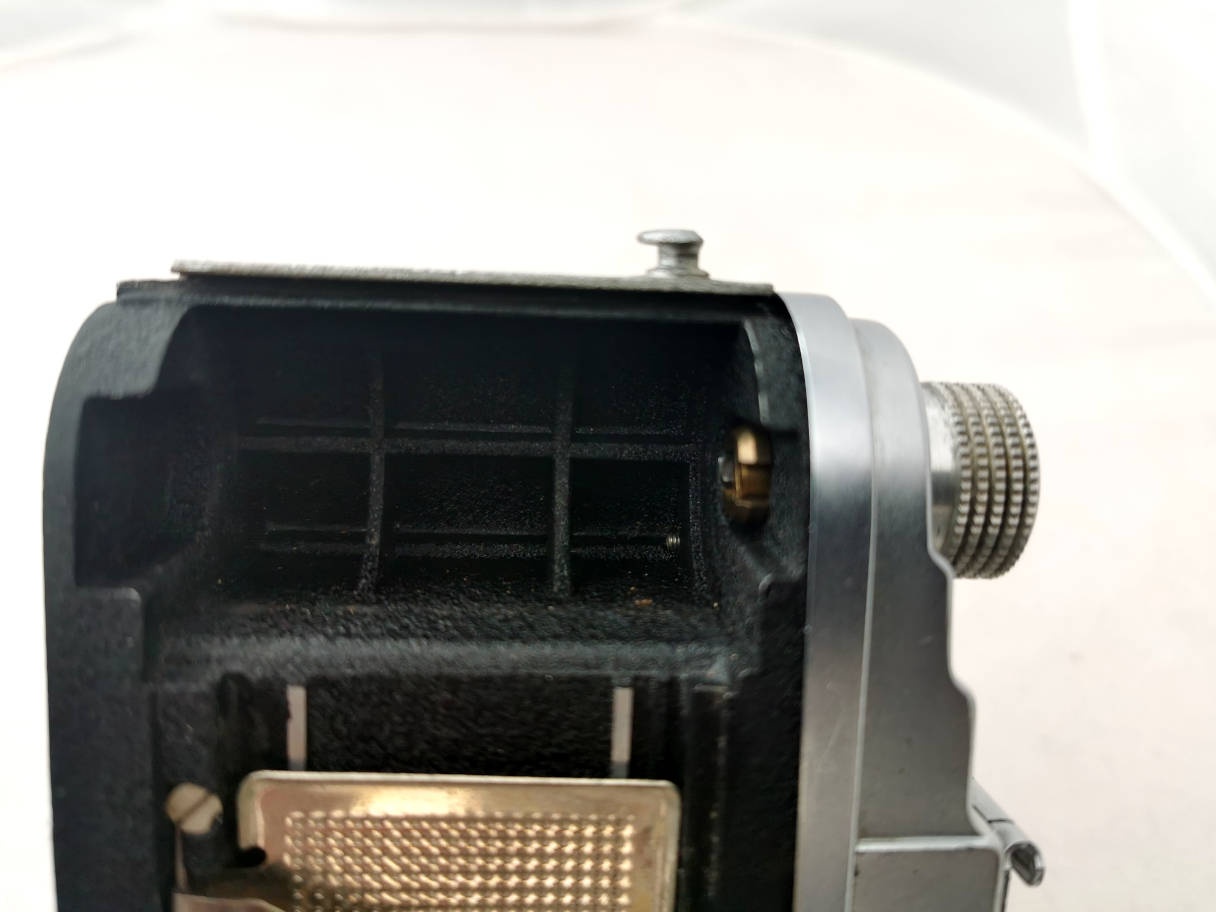
Rescrew the axis before putting a new film, it must not stick out during film wind.
The Finetta 99 is a rare camera, obviously very few have survived. I
found my camera for very little money on a flea market. It's in good
state for a camera of that age except the filter mount of the lens which is heavily dented. The
shutter worked, but the speeds were off. The film wind however was weak. I had it restored. It's a nice camera
with a cute 1950s design.
If you want one, bear in mind that it has quite some odds:
You must not release the camera without film in it! That's very
strange and totally unusual. The first thing every photographer would
do, is to test the functions without a film in the camera. The German
manual says it it bit softer, it says the you should not use the camera
without film. The manual of the American Ditto 99 is more drastic. The
Ditto 99 had a warning attached to the back that reads:
ATTENTION
1. DO NOT OPERATE without film.
2. TAKE CARE THAT the Rewind spindle is withdrawn and locked out of all contact with the cassette.
3. Sequence cycle is interrupted by long exposure - thus the "B" lever
must be returned to normal position before proceeding to the next
exposure,
4. Don't overwind the spring-motor and never wind with "B" lever engaged at "B".
5. READ INSTRUCTION BOOK BEFORE OPERATING.
So the rewind and the B lever are already mentioned. The film transport
does not use the sprockets. The wind spindle is quite thick and the
camera makes one turn per photo. This results in growing spacing after
each photo, incompatible with modern film scanning machines. It also
wastes some film.
The absence of parallax correction makes the use of the wonderful macro
lens nearly impossible. A rangefinder would have been very useful. The
lack of a light meter makes it less attractive. The camera is quite
big. The spring wind motor seems to be less robust than others, the
RoBot cameras for example have rarely an issue with it. After not using
the camera for a while, the speeds were off again. As the prices for
those cameras and lenses dropped quite a lot, I decided to make a
custom lens for my Sony A7 from the Finon and sell the body for parts.
The customization is here, link opens in a new page.
So it's a nice camera for collectors, but I would prefer a compact metred rangefinder.





















